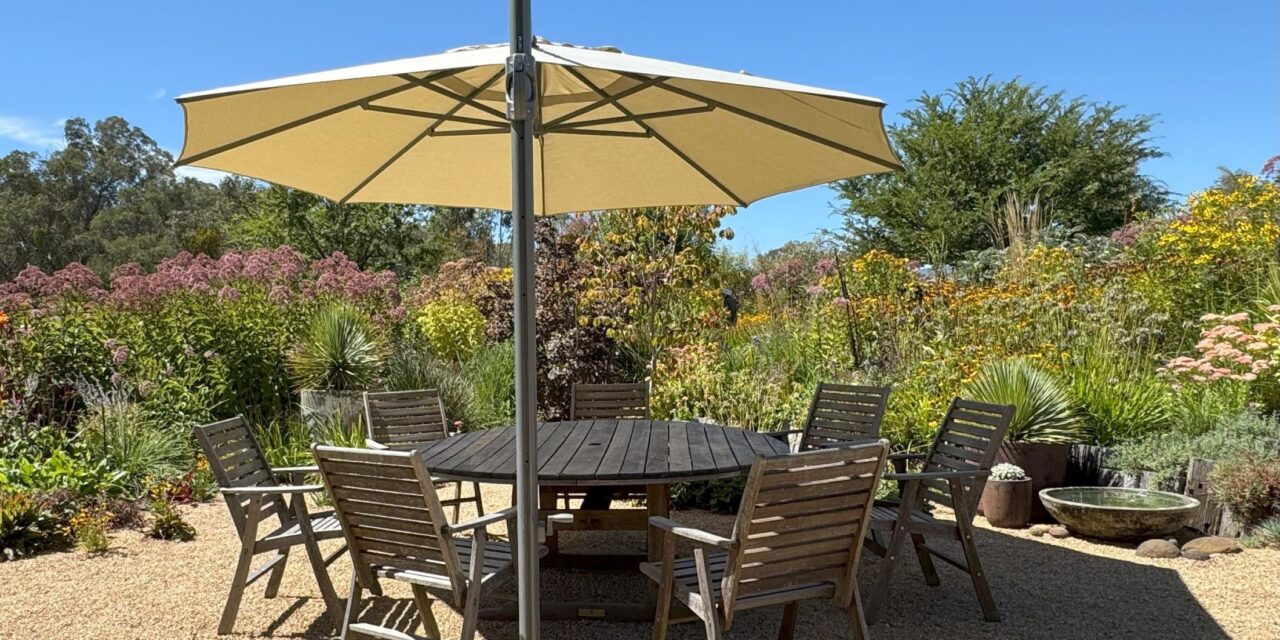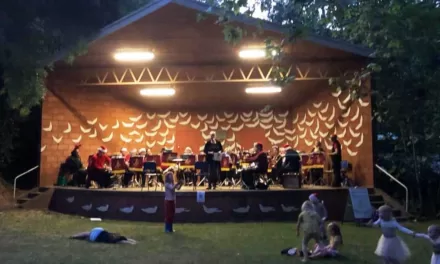Diane Beddison
I was very fortunate to visit The Barwitian Garden, which is a natural, wild perennial-based garden created by Garden Designer Ralph Bristow. Instead of the plant of the month the photograph is of this enchanting garden.
Gardening Fun
March can still be hot, so make sure your plants are well watered ahead of hot and windy days. Add some organic matter to your garden and top up the mulch around vegetables and your vulnerable plants.
Lightly prune and feed autumn flowering species in early March to maximise flowering. Pay special attention to roses, hydrangeas and perennials which are continuing to flower. Camellias are getting ready to flower so feed them now and water consistently.
Feed other plants during autumn to encourage growth while the soil is still warm. Neaten up plants which have finished flowering for the year. You may wish to leave some perennials until winter, to enjoy attractive seed heads, as is the practice in wild perennial gardens. Autumn is an important time to shape hedges.
Give your citrus trees some love now. Citrus trees are very hungry plants so feed them with mature poultry manure every six weeks during autumn. Also apply sulphate of potash to encourage fruit and flower production. Water the root zone of the tree well before and after applying manure or fertiliser. Spray citrus with Eco-oil to prevent damage from Citrus Leaf Minor. Pay special attention to new growth and always spray on a cool day.
This is the season to plant brassica seedlings in your vegetable garden. Enjoy some home-grown cauliflower, broccoli, and brussels sprout. Your can also plant lettuce, silverbeet and rocket. You may not realise that easy care rocket is also a brassica.
And once the hot days have gone, autumn is the best time to plant or begin a new garden project. Plenty of warmth is left in the soil and hopefully there will be some soaking rain. Planting now encourages growth and there is ample time for plants to settle in prior to next summer.
Planting Design
Do you have garden beds that need to be restored? Perhaps some areas look drab, there are large gaps, or your garden is lacking planting variety or seasonal interest?
Rather than just rushing to the nursery, ask yourself these questions and do some planning:
- March is a good time to wander around you garden and decide what plants need to be moved or taken out. Plants you keep must be healthy and an asset to your garden.
- What colours do you enjoy? Colour is not just about flower colour. Also consider leaf colour, autumn tones and bark colour.
- What garden style do you want to create? Do you want a native garden to bring more birds into your garden, a cottage garden with mainly exotic plants including perennials, something more formal with hedges to create structure or are looking for a sympathetic mix of tough plants?
- What new plants would you like to include in your garden? You may have found unusual plants flourishing in a local garden.
- Assuming you have answered the questions above, you can now visit one or two nurseries. But not to buy. Do your research first. Take photos of plants you like which will fit with your garden style and complement the existing plants. Read the labels and take note of their expected size and preferred growing conditions.
- Whatever you style, your garden should be planted in layers. Include trees, large and small shrubs, and plenty of ground covers. Add perennials for their interesting floral display. And make sure you have a variety of leaf shapes and colours and include some grey leafed plants.
- When designing with plants, consider the various micro-climates within your garden. And avoid planting Roses in the shade or a traditional Hydrangea in the sun.
Enjoy Autumn in the Garden.
Diane Beddison is a frequent visitor to Daylesford and the Principal of Beddison Garden Designs (www.beddisongardendesigns.com)











